If you plan on traveling to Costa Rica’s neighboring countries by foot, bus, or car, you’ll want to know about its border crossings. Costa Rica has several borders or fronteras connecting it to Nicaragua to the north and Panama to the south. We’ve crossed several of these borders during our time in Costa Rica. They’re typically hectic and crowded, with lines of people queued up, and are dusty, hot, and uninviting. While they do share certain similarities, each border is set up a little differently so it takes some time to figure out where to go and what to do. We recently did the Rio Sereno border crossing in southern Costa Rica and were pleasantly surprised by the experience. In this post, we’ll share what you need to know to get ready to cross this little-known border.
For information on the Paso Canoas border, read our post Crossing the Paso Canoas Border: Costa Rica and Panama’s Biggest Border Crossing.

Location
The Rio Sereno border is located in the mountains of southern Costa Rica. The closest major town on the Costa Rica side is San Vito, a rural community with a small-town feel that is best known for hosting the Wilson Botanical Gardens. The San Vito area is also a birding hotspot, complete with a local birding club. On the Panama side, the closest major town is Volcan, and the city of David is a couple of hours away.
Border Crossing Process
What You’ll Need
Note: The requirements sometimes change. We’ll try to update this post if they do, but as of January 2016, this is what is required.
- 2 copies of your passport (photo/ID page)
- Proof of onward travel (plane ticket)
- $500 or bank statements or a credit card to show proof of sufficient funds (3 months)
- $8 to pay Costa Rica’s exit tax. Payable in Colones as well.
UPDATES: These apply to anyone living in Costa Rica and crossing the border to renew your tourist visa. We recently heard of two changes from a reader (October 2016): (1) Costa Rica is now requiring one day out of the country before they will stamp you back in; and (2) You need a bus ticket out of Panama in addition to your plane ticket. The official in Panama suggested that the people get one from Rio Sereno to Sabalito. If you have had an experience with either of these, let us know in the comments below. We recently went to this border in September 2016 and neither happened to us. We did have our residency papers with us showing that our application had been made, which probably helped with the Costa Rica side.
Set-up
The first thing you’ll notice about the Rio Sereno border is how quiet it is. You won’t find the traffic, lines of tractor trailers, and crowds of people here that you see every day at the busy Paso Canoas border, one of Costa Rica’s other border crossings with Panama. At Rio Sereno, there are just few government buildings, a grocery store, and a couple of other small stores and duty free shops spread out along the dirt road.
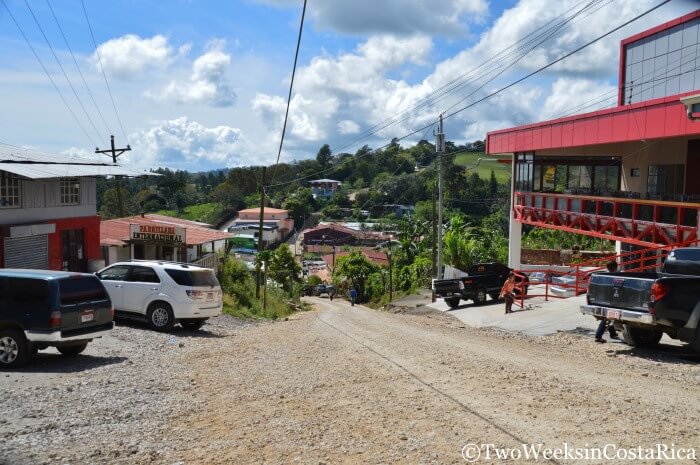
Here’s a map to help you get your bearings. The three buildings that you will need to visit are all within a few minutes’ walk from one another.
For directions to the border, see the bottom of this post.
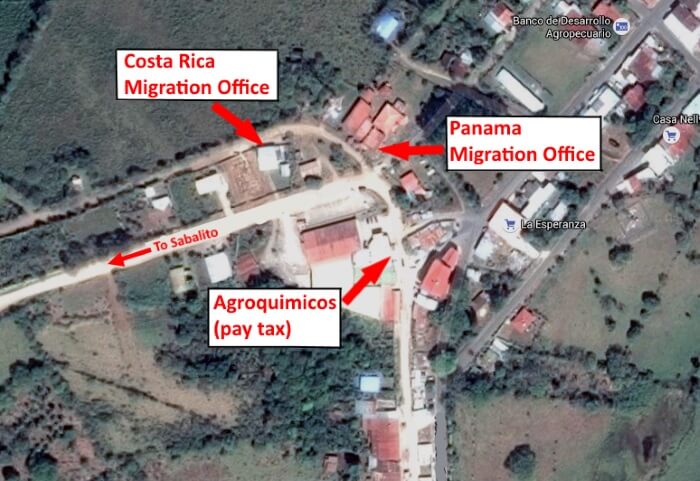
Exiting Costa Rica and Entering Panama
The first thing you’ll need to do is get your exit stamp from Costa Rica. Here’s a breakdown of the process:
- Pay departure tax: Costa Rica has a tax (impuesto) that must be paid before you can exit the country by land. Everyone crossing on foot or by car or bus has to pay this tax. You can pay it at certain banks in Costa Rica in advance, but the easiest way to do it is right at the border. Look for the Agroquimicos store on the right as you come into the border area, after the government buildings and next to the grocery store. The tax is $8. They’ll give you a receipt that you can put in your passport for when you check out of Costa Rica.
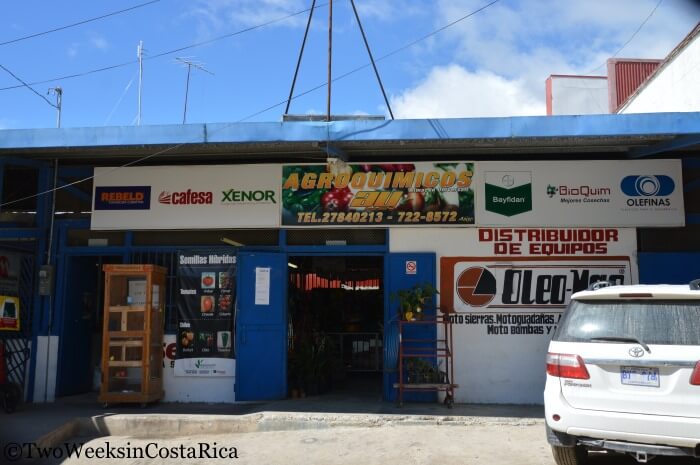
- Check out of Costa Rica: Once you’ve paid the exit tax, head back up the small hill to the Costa Rica Migration office. It’s one of the first buildings on the left as you come into the border area. It’s a makeshift-looking building with a corrugated metal roof and a sign that says Oficina Reg. Sabalito. You can enter from the open area in the front or back. Note: This is a separate building from the Costa Rica police station.
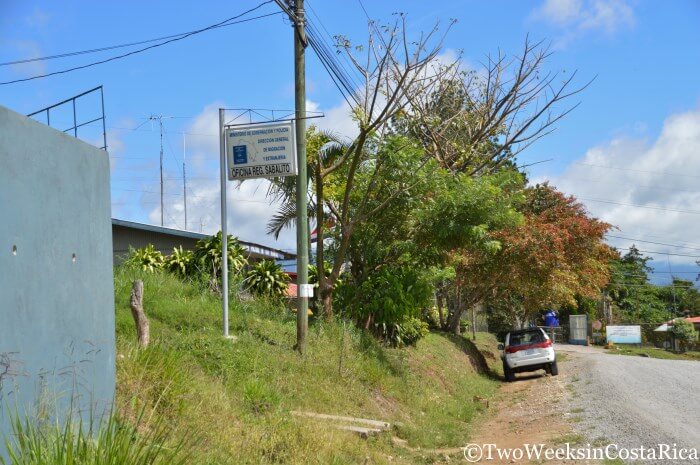
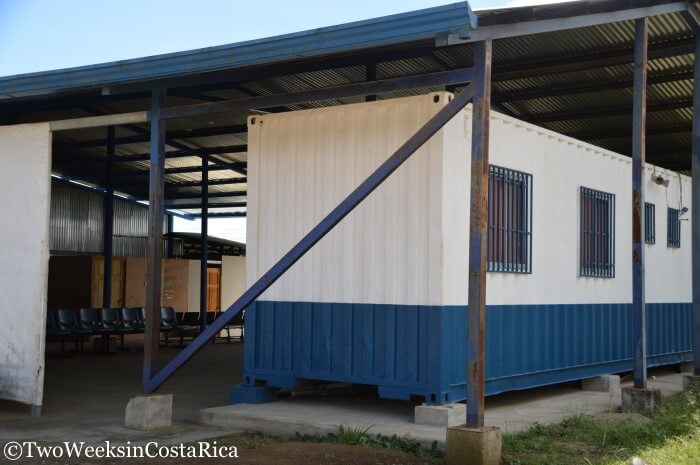
There will be a large open space and some chairs, though there’s not likely to be any line as this border crossing usually isn’t very busy. The immigration official will ask you for your passport and have you fill out a form where you put basic information like your name, passport number, destination, etc. Usually the agent doesn’t ask too many questions but we’ve been asked where we’re traveling, for how long, and if we’re going by car. Once the agent has gone through your paperwork, he or she will put an exit stamp in your passport.
Note that if you’re bringing your car across the border, there is another whole process for getting the permissions and paying insurance.
- Get stamped into Panama: Once you have your exit stamp, head a couple hundred meters down the street to the Panama Migration office. It’s the green building with the red roof. Look for the Panama flag and a yellow sign that says Migracion.

When you enter the building, go to the office on the left. If there is a line, wait on the right side of the entranceway under the sign “entrada/salida.” The line on the left is for “grupos originarios” or indigenous travelers, which require different paperwork. This area of both countries has several indigenous communities so you will likely see them waiting around town, dressed in colorful dresses.
Once in the office, the immigration agent will take your passport. There isn’t a form to fill out, but the agent will likely ask where you’re traveling to and for how long. They will probably also ask for a copy of your passport and proof of $500 (usually can be satisfied by showing 3 months’ of bank statements or a valid credit card if you don’t want to carry cash). We weren’t asked to show $500 but it’s best to be ready to do so. If you don’t have a copy of your passport, you can have one made at the Libreria (office supply store) next to the Agroquimicos store.
The last requirement is to show proof of onward travel out of Panama within 180 days. This requirement has changed over the years and even differs by border. Bus tickets out of the country sometimes work, but lately Panama has been requiring a plane ticket back to your home country (country that issued your passport). At Rio Sereno, we were asked for our plane tickets and gave them our tickets from Costa Rica to the US.
The agent will then stamp your passport and you’re ready to travel to Panama. Standard visas are for 180 days.
Exiting Panama and Entering Costa Rica
If you’re returning to Costa Rica after your visit to Panama, you’ll just go through the process in reverse.
- Get stamped out of Panama: Go to the same office and get stamped out of Panama. This is usually a very straightforward process and there are no fees. We weren’t asked any questions other than for a copy of our passports.
- Get stamped into Costa Rica: Go back to the Costa Rica Migration office. They’ll have you fill out the same form you did before. Costa Rica requires proof of onward travel out of the country through a plane ticket back to your home country within 90 days. We were asked for this ticket and also where we were going in Costa Rica. Standard visas are 90 days, but the exact amount is up to the discretion of the immigration official.
Directions from Costa Rica
Getting to San Vito and then on to Sabalito is fairly straightforward, but the road to the border isn’t well marked. Once you enter downtown Sabalito, you’ll pass some small stores and restaurants and then come to an intersection with a road going to the left (near the gas station). Continue straight/right on the main road, passing the supermarket BM on the right. In about 50 meters, as you go up a small hill, you’ll see a large sign on the right that says Zona Comercial 5 Esquinas. Take the dirt road on the left across the street and follow it all the way to the border (about 5-10 minutes). There are a few twists and turns but it is easy to tell which dirt road is the main one. It is bigger and in better condition than the offshoots.
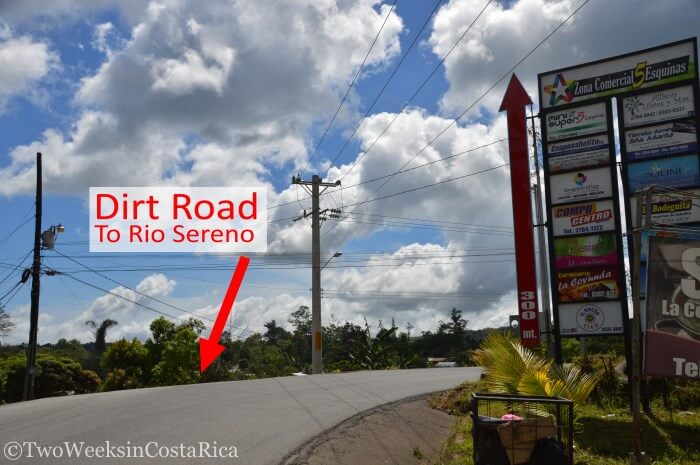
Where to Stay
If you’re looking for a place to stay on the Costa Rica side, San Vito is a good option. It has several local restaurants (and some good Italian ones), grocery stores, and shops in the busy downtown. The downtown also offers some inexpensive hotels, and on the outskirts of town are a few bed and breakfasts. Hotel Cascata del Bosco and Casa Botania are two charming B&Bs that are just a short drive from the Wilson Botanical Gardens. The town of Sabalito, closer to the border, also has a few simple accommodations if you’re getting in very late, like Cabinas Talinda.
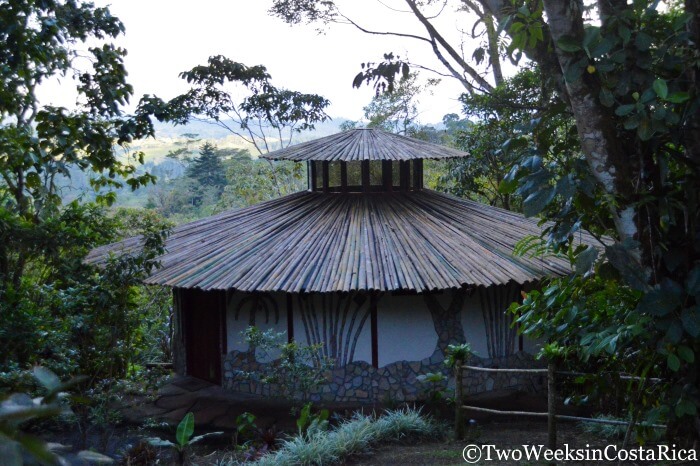
On the Panama side, one of the closest towns is Volcan, about 45 minutes from the border. Volcan is near the Baru Volcano, Panama’s highest peak, and is great for outdoors’ enthusiasts. It is often compared to the popular town of Boquete, but is less developed and more reasonably priced. If you’re looking for lodging near Volcan, a couple of good options are Cielito Sur Bed & Breakfast Inn in Cerro Punta, close to the volcano, and Hostal Victoria Volcan Chiriqui, a budget hotel located in the downtown.
If you’re looking to avoid the busy Paso Canoas border, we highly recommend the Rio Sereno border crossing. In addition to being much easier to navigate, the Rio Sereno border is nice because it’s close to the picturesque town of San Vito and the beautiful landscapes of Costa Rica’s southern zone.
Have you done this border crossing recently? Leave a comment below with your experience to help other travelers know what to expect.
Some of the links in this post are affiliate links. If you book a hotel using one of the links, we receive a small commission at no extra cost to you. Read our Privacy Policy for more information.

